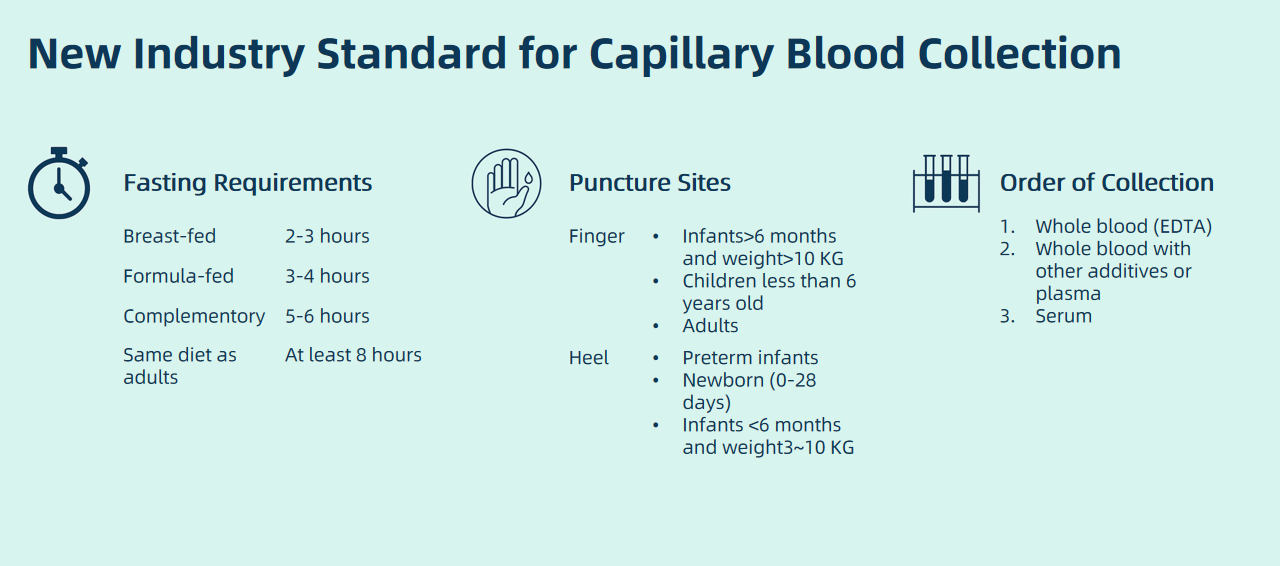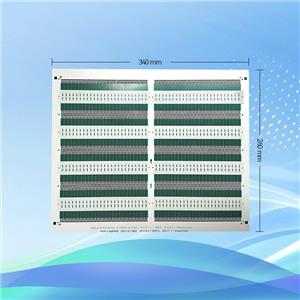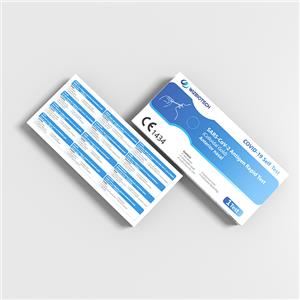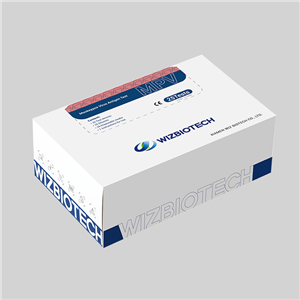New Industry Standard for Capillary Blood Collection — What It Means for Your Laboratory
On July 30, 2025, China’s National Health Commission released the Guidelines for Collection of Capillary Blood Specimen along with 15 other recommended health industry standards. These new guidelines will officially take effect on February 1, 2026.
For laboratories, diagnostic centers, and point-of-care testing (POCT) providers, understanding and complying with these guidelines is essential — both for patient safety and for ensuring reliable test results. Below, we’ve summarized the key changes and how they may affect your daily operations.
1. Fasting Requirements — More Flexible Than Before
Not all tests require fasting. According to the new standard:
No fasting needed for tests such as:
Complete blood count (CBC)
Trace elements
Infectious disease markers
Pathogen antibody testing
Other tests should follow specific fasting requirements as per the test protocol.
For infants and children:
Breastfed: 2–3 hours or until next feeding.
Formula-fed: 3–4 hours or until next feeding.
With complementary foods: 5–6 hours or until next feeding.
Same diet as adults: Minimum of 8 hours.
💡 Tip for labs: Clear fasting instructions reduce pre-analytical errors and improve sample integrity — a critical factor for accurate results when using advanced immunoassay analyzers.
2. Hand Hygiene — Stricter Compliance Standards
The guidelines emphasize enhanced infection control:
Disinfect hands before putting on powder-free gloves.
Before each collection, disinfect glove surfaces and allow to dry.
Change gloves after every patient; if unavoidable, change at least every 10 uses.
Always replace gloves if damaged, contaminated, or after sampling infectious patients.
💡 Tip for operators: Consistent hand hygiene ensures reliable results when working with high-sensitivity reagents that may be affected by contamination.
3. Puncture Site Selection — Precision Matters
Choose warm, healthy skin free from scars, wounds, bruises, rashes, burns, or infection.
Fingerstick: Sides of the middle or ring finger tip.
Heelstick: Inner or outer heel for newborns and small infants.
Recommended by age:
Preterm & newborns (0–28 days): Heelstick.
Infants under 6 months (3–10 kg): Heelstick preferred; fingerstick if necessary.
Infants over 6 months & children under 6 years (>10 kg): Fingerstick preferred.
Adults with difficult venous access: Fingerstick as alternative.
Avoid:
Thumb, little finger, earlobe.
Heel arch or toes (except big toe).
Swollen or recently punctured sites.
4. Order of Collection — For Consistent Results
When collecting multiple capillary blood samples from the same patient:
Whole blood (EDTA anticoagulant)
Whole blood with other additives or plasma (centrifuged)
Serum samples (centrifuged)
💡 Why this matters: Correct order of draw minimizes cross-contamination and ensures that reagents and analyzers deliver accurate, reproducible results.
5. How Your Lab Can Prepare Now
Although the guidelines will be enforced in 2026, early preparation will help your lab stay ahead.
Update collection protocols and train staff.
Verify that your reagents perform consistently with capillary blood samples.
Ensure your immunoassay analyzer settings are optimized for small-volume specimens.

At Wizbiotech, our diagnostic reagents and immunoassay systems are designed for precision testing, even with micro-volume capillary blood samples — helping your lab meet the latest national standards with confidence. Currently we have capillary blood test items like 25-OH-VD, HbA1c, H.pylori antibody, CRP and so on. Wanna know more? Contact us via whatsapp or leave message.




